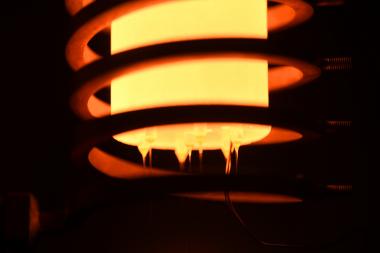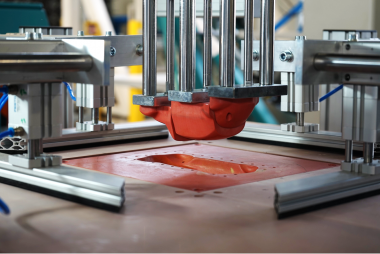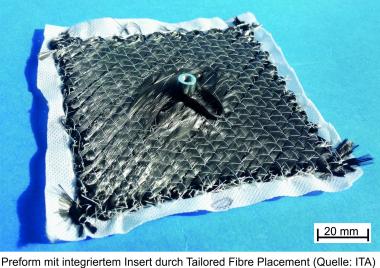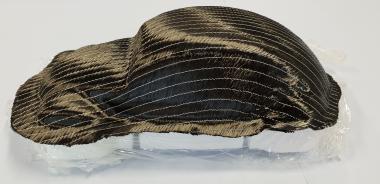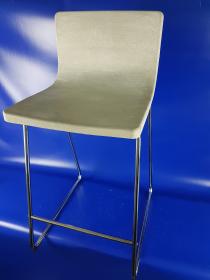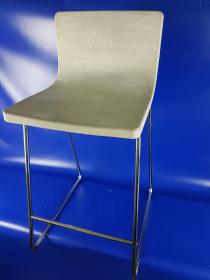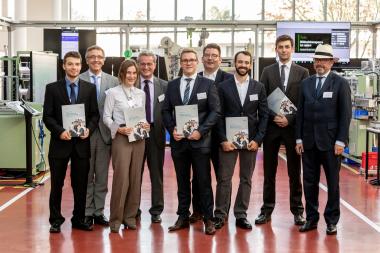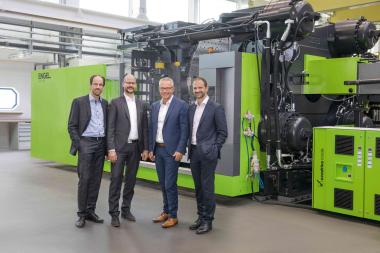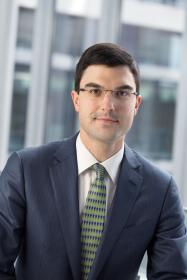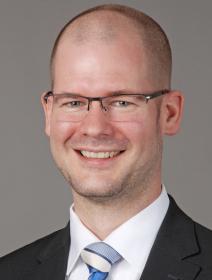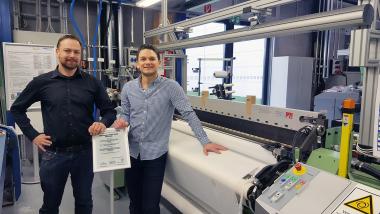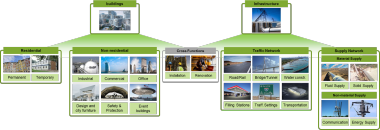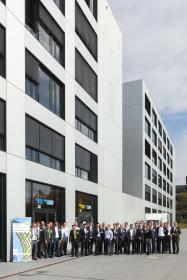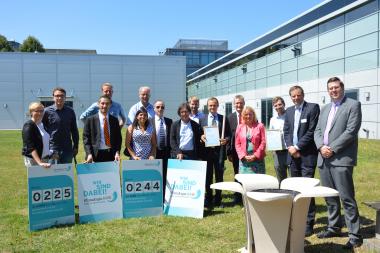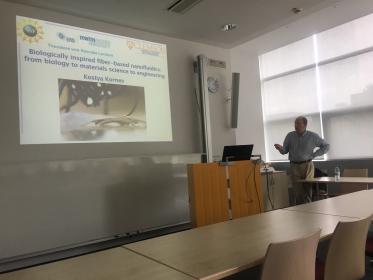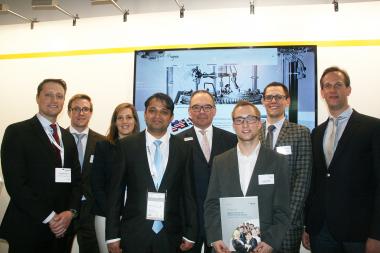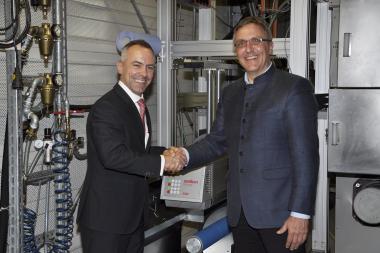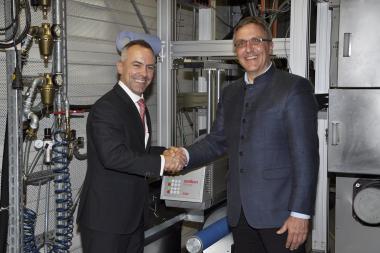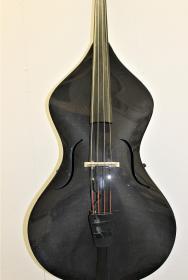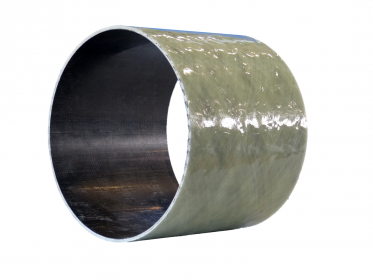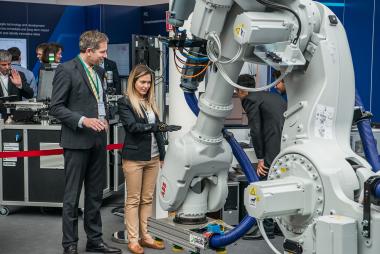ITA zeigt auf der JEC World 2019 u.a. neue Glasfaserspinnanlage
Am Gemeinschaftsstand des Aachener Zentrums für integrativen Leichtbau (AZL) in Halle 5A Stand D17 demonstriert das Institut für Textiltechnik der RWTH Aachen University (ITA) vom 12.-14. März 2019 in Paris seine Kompetenzen in den Bereichen Glasfasern, Preforms und Carbon Composites.
Die Exponate stammen aus unterschiedlichen Anwendungsfeldern und adressieren die Branchen Automotive, Luft- und Raumfahrt und Maschinenbau.
- Innovative Glasfaserforschung am ITA
Der modulare Aufbau der neu entwickelten, induktiv beheizten Glasfaserproduktionsanlage ermöglicht hohe Flexibilität in der Forschung und das Induktionssystem eine deutlich schnellere Bedienbarkeit. Erstmalig werden am Stand des ITA Glasfasern live auf der JEC World hergestellt. Zu den Neuheiten der Anlage gehört das induktiv beheizte Bushing. Es hat ein flexibles Design und besteht aus einer Platin-/Rhodium-Legierung (Pt/Rh20) zum Einsatz für Hochtemperaturgläser. Die Glasfaserproduktionsanlage wurde so konstruiert, dass sich neue Konzepte und Ideen schnell erproben lassen.
- DrapeCube – Umformung textiler Halbzeuge
Der DrapeCube bietet eine kostengünstige Konstruktion zur Herstellung von Faservorformlingen aus textilen Halbzeugen. Er kommt zum Tragen bei der Fertigung von Preforms für Prototypen und in der Kleinserie und eignet sich für Unternehmen, die in der von faserverstärkten Kunststoffen (FVK) tätig sind.
Bei der Produktion von FVK-Bauteilen wird im Preformingprozess ein Großteil der späteren Bauteilkosten definiert. In kleinen und mittelständischen Unternehmen wird dieser Prozessschritt oft noch manuell ausgeführt. Daraus resultieren hohe Qualitätsschwankungen und Bauteilpreise. Besonders bei hochbelasteten Strukturbauteilen führt die Qualitätsschwankung dazu, dass die Bauteile überdimensioniert sind. So wird das Leichtbaupotential von faserverstärkten Kunststoffen zu wenig genutzt.
Eine Lösung bietet das aus der blechumformende Industrie adaptierte Stempelumformverfahren zur Formgebung von Verstärkungstextilien. Dabei wird das Textil zwischen zwei Formhälften (Patrize und Matrize) eingelegt und automatisiert umgeformt. Dieses Verfahren kommt aufgrund hoher Anlagen- und Werkzeugkosten fast ausschließlich in der Großserie zum Einsatz. Das ITA hat die Formgebungsstation DrapeCube entwickelt, die eine kostengünstige Alternative bietet und in der Lage ist, den aktuellen Stand der Technik für die Formgebung textiler Halbzeige vollständig abzubilden. Am Stand werden die Prozessschritte in einem Video demonstriert.
- Kohlenstoffaserverstärkter Kunststoff (CFK)-Preform
Der CFK-Preform besteht aus Carbon-Multiaxial-Gelege, das durch expandiertes Polystyrol (EPS) umgeformt ist, um die Drapierqualität zu optimieren. Durch die schonende, textilgerechte Umformung mittels Schaumexpansion können Preforms in erhöhter Qualität hergestellt werden. Erstmalig wurde die Schaumexpansion genutzt, um Preforms so umzuformen, dass die Drapierqualität im Vergleich zur klassischen Stempelumformung verbessert wird.
Die Vorteile des so umgeformten CFK-Preforms liegen in der Einsparung von Anlagenkosten, da das Investment viel geringer ist. Dazu wird der Verschnittanteil reduziert, weil eine endkonturnahe Fertigung ermöglicht wird. Darüber hinaus wird der Ausschuß verringert, da weniger Fehler im Textil entstehen.
Zielgruppe sind die Hersteller von faserverstärkten Bauteilen, insbesondere für die Klein- und Mittelserie, bei denen die klassische Stempelumformung nicht wirtschaftlich ist.
- Gestickter Preform mit integriertem Metallinsert
Die 12k Carbonfaserrovings werden durch das Spezial-Stickverfahren Tailored Fibre Placement (TFP) zu einem Preform abgelegt. Beim weiteren Lagenaufbau wird der Insert nicht nur unter den Rovinglagen integriert, sondern durch zusätzliches Umschlaufen fixiert. Der hochintegrative Preformingansatz bietet die Möglichkeit zur Reduktion von Gewicht und Prozessschritten sowie zur Steigerung der mechanischen Performance.
Bisher wurden Inserts geklebt oder es waren Bohrungen im Bauteil notwendig. Aufgeklebte Inserts sind durch die Klebefläche limitiert. Das Einkleben von Inserts in Bohrungen zieht hohe Bohrerabrasion und damit hohen Werkzeugverschleiß nach sich.
Die Vorteile des gestickten Preforms mit integriertem Metallinsert bestehen in der Reduktion von Verschnitt durch TFP-Preforming und der Steigerung der spezifischen Ausreißkraft. Dazu besteht die Möglichkeit, die Herstellung integrativer Preforms zu automatisieren. Damit ist der Preform mit integriertem Metallinsert interessant für die Zielgruppe Automotive und Luft- und Raumfahrt.
RWTH Aachen, ITA, Textiltechnik
Institut für Textiltechnik of RWTH Aachen University


